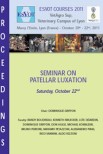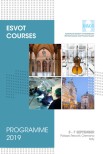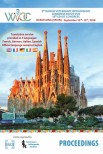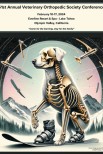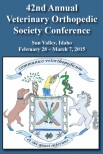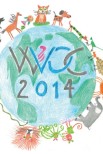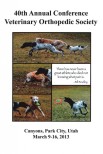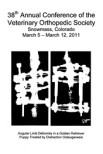 During the last half century, the veterinary profession has witnessed an unprecedent growth in expertise and knowlegde in regard to the management of fractures and traumatic injuries in animals, both large and small. As we pause to reflect on this development, we recall with great fondness our memories of the late Wade o. Brinker who was a spark and catalyst for mush of this progress (see memorial in this issue of Vcot starting page xi). A brillant teacher and surgeon, Wade accrued an immense volume of clinical experience in fracture surgery.
During the last half century, the veterinary profession has witnessed an unprecedent growth in expertise and knowlegde in regard to the management of fractures and traumatic injuries in animals, both large and small. As we pause to reflect on this development, we recall with great fondness our memories of the late Wade o. Brinker who was a spark and catalyst for mush of this progress (see memorial in this issue of Vcot starting page xi). A brillant teacher and surgeon, Wade accrued an immense volume of clinical experience in fracture surgery.
Using this experience, he refined the clinical application of the intramedullary pin, the external skeletal fixator and bone plate devices in fracture treatment. Through his textbooks, teaching at Michigan State University, and courses in the USA and around the world, Wade Brinker was an inspiration and mentor figure to many of us. He was a humle man who was quick to attribute credit to others when it was due.
Therefore, I am sure he would have been one of the firts to acknowledge that many of the techniques of frature treatment used today have their origins in different and far off corners of our world. For example, it was Gerhard Kuntscher, a German surgeon, who pioneered intramedullary nailink of diaphyseal fractures, and then later Ronald Huckstep, a British surgenon working in Uganda, who introduced the interlocking nail. The circular external fixator and disctraction oteongenesis were originated by Gavril Ilizarov in Russia, and further refined by the Italian surgeons before being introduced to the rest of the world.
Numerous European surgeons tried in vain to treat fractures with bone plates and screws, mainly due to a lack of understanding of asepsis. However, it was Robert Danis in Belgium and Geroge Bagby in the USA who devised the concept of the "self- compressing" bone plate to allow the generation of interfragmentary compression, prior to the AO who brought this concept of fracture management to reality in Switzerland.
So, in looking back over the last 50 years, we can readily apprceciate the value of internationalism in veterinary orthopaedics for the way in which it has facilitated the exchange of inspiration, ideas and new development.
As an organization, the ESVOT has provided a healthy and vigorous forum dedicated to orthopaedic teaching on an international level. The firs congress of the World Veterinary Orthopaedic Society was hosted by ESVOT in Munich 2002. Now you will read in the report of Aldo Vezzoni, the Past President of ESVOT, about the launch of the Ortho Vet Supersite (www.orthovetsupersite.org). This big step will take ESVOT even further forward with their mission to deliver the highest quality teaching in veterinary orthopaedics in a friendly atmosphere that facilitates the opportunities for networking with colleagues around the world. I congratulate ESVOT of their success and look forward to the next World metting in Bologna in 2010.
Editor-in-Chief
| Attachment | Size |
|---|---|
| full paper | 50.75 KB |
